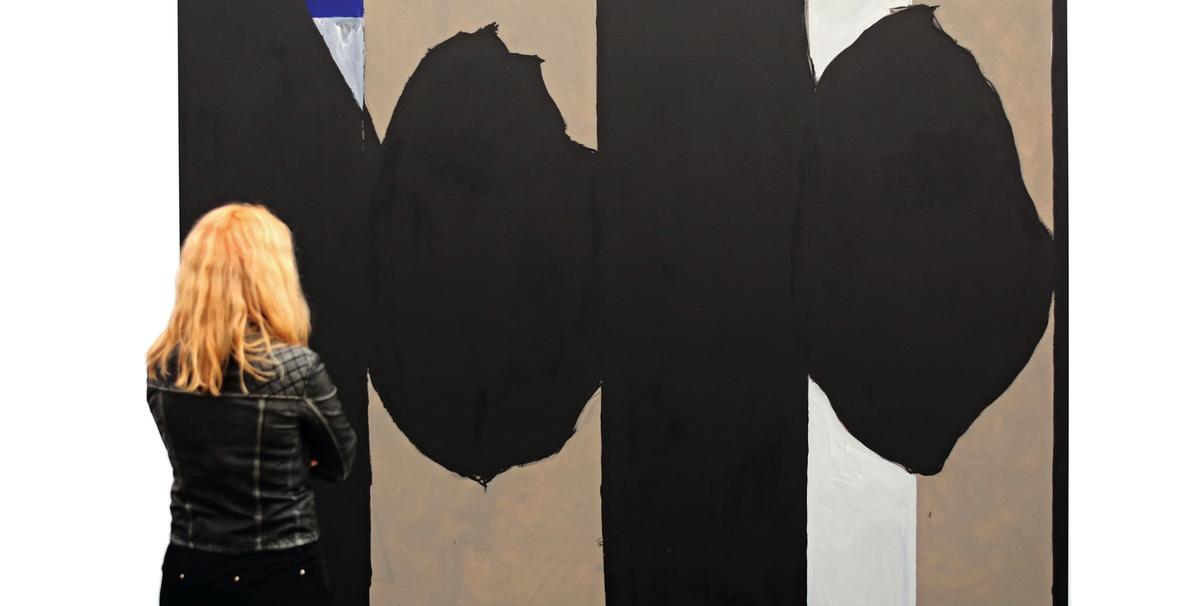Frieze New York, known for its cutting-edge contemporary art, is looking back in time this year, with more galleries showing 20th-century art than ever before. Newcomers in this field include Castelli Gallery, Bernard Jacobson Gallery, Axel Vervoordt and Eykyn Maclean, which is offering Red Rabbit (1982) by Jean-Michel Basquiat for $8.5m—the first time that a work by the late artist has appeared at the fair.
It is not the first time that the fair has courted galleries with a more historical bent, however. Acquavella Galleries, known for mounting shows by masters from Picasso to Pop, participated in 2014, as did Skarstedt.
The fair’s director, Victoria Siddall, says that there was a “significant uptick” in applications from galleries specialising in 20th-century art this year. “When we opened the door to these works, the response was really strong. That was a turning point,” she says.
Siddall is keen to stress, however, that the fair is not relinquishing its contemporary roots. “We haven’t changed the number of young galleries; that’s still incredibly important,” she says. Rather, Siddall says, the new prominence accorded to older art “adds to its diversity”, as well as “providing a context for what contemporary artists are looking back to”.
Elizabeth Dee, who is showing works including pieces from the late 1980s and early 1990s by Annette Lemieux ($15,000-$55,000), says that more historical works have come into focus since the market for emerging art flopped in 2015. “Especially in the US, there was a trend of people buying for the sake of it,” she says. “Collectors are now more interested in a larger continuum in terms of art history.”
Tribal art enters the tent That continuum extends to tribal art for the first time, with three dealers invited to participate: Entwistle Gallery, Galerie Meyer and Donald Ellis. Anthony Meyer, of the eponymous Paris gallery, says that Modern and contemporary collectors are increasingly crossing over to African and Oceanic art.
“Contemporary art is based on the Modern art of yesterday, which is highly influenced by the tribal art of the early 20th century,” he says. Meyer is showing a single-owner collection of 39 Papuan Gulf spirit boards, created between the late 1800s and the 1950s, each priced from “tens of thousands of dollars to well over $100,000”.
Some of the oldest works come courtesy of the New York-based dealer Jason Jacques, who is the first ceramics specialist to exhibit at the fair. He is showing 19th-century sculptures by Jean-Joseph Carriès ($7,000-$55,000) alongside contemporary works by Eric Serritella ($30,000-$150,000).
Demonstrating the broader range, Aicon Gallery, in the Spotlight section, is presenting a solo stand of works by the Indian Modernist F.N. Souza, all dating from before 1990.
Dealers dismissed speculation that Frieze New York’s historical turn is a response to the launch of Tefaf’s Modern and contemporary fair in Manhattan, which also opened this week. Several galleries are showing at both. “New York has never been a one-fair town. I hesitate to see it in a competitive spirit,” Dee says.
Siddall, who launched Frieze Masters in London in 2012 to cater for works made before 2000, says that there are no plans for a New York edition of the fair. But the influence is unmistakable, with 46 out of 203 galleries at Frieze New York this year having exhibited previously in Masters.
Many Masters loyalists welcomed Frieze New York’s move to embrace older art. “We decided to participate because we enjoy Frieze Masters. It would be great to have something similar in New York, although it’s more interesting to have it all under one tent,” says Robert Delaney, a director at Bernard Jacobson, which is showing paintings by Robert Motherwell, including Elegy to the Spanish Republic No. 130 (1974-75), priced at around $10m. The earliest work on its stand is a 1947 print by Henri Matisse. “It’s like there is a little bit of Frieze Masters here in New York,” says Lance Entwistle of the eponymous gallery.


